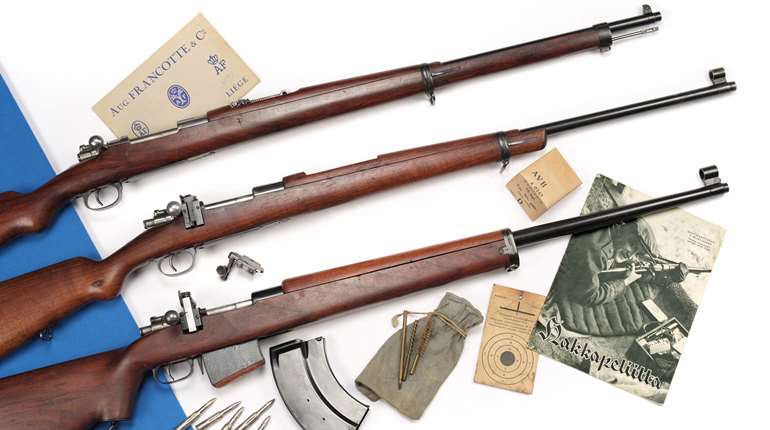
There have been dozens of letters and e-mails on the topic of “Lock and Load.” While we cannot say what individual range commands were on every military and civilian range for nearly a century, we can rely on the printed War Dept. and Dept. of the Army sources.
There are differences in the terms used to define and explain rifle operation and the range commands used in marksmanship training and firing for record. For example, FM 23-5 U.S. Rifle Caliber .30, M1 in “Section II: How The Rifle Works” defines “(3) Locking—locking the bolt in the receiver.” And then it defines “(5) Unlocking—unlocking the bolt from the receiver.” It is explained as “c. Locking. When the bolt is all the way forward, the rear camming surface in the hump of the operating rod forces the operating lug of the bolt downward, causing the bolt to rotate clockwise. The bolt is locked by the locking lugs on both sides of the bolt, engaging locking recesses in the receiver.”
But that applies only to the description of the rifle’s operation. Range commands and usage are different matters entirely. The earliest reference I found in U.S. military literature regarding “lock” and “load” was from the War Department Basic Field Manual, Volume III, Basic Weapons (1932). There are perhaps earlier uses of these terms, but in our reference library I was unable to find previous instances. In the section describing Rapid Fire “(b) When all is ready in the pit, a red flag is displayed at the center target. At that signal the officer in charge of the firing line commands: LOAD. The rifles are then loaded and locked.” Remember, these range instructions were for the U.S. M1903 and the U.S. M1917 rifles, both bolt-actions that did not allow the bolt to be manipulated with the safety engaged, or “locked.”
In FM 23-6, Basic Field Manual U.S. Rifle Caliber .30, M1917 October 1943, it gives the definition of “lock” as it pertains to the safety on the U.S. M1917. “f. Safety device—To set at safe, turn the safety lock to the rear as far as it will go. This locks the bolt handle in position, and lifts the sear notch off the sear nose. To unlock, turn safety lock to the front.”
For the Sustained Fire marksmanship instruction, FM 23-6 gives the following: “2. When all is ready in the pit, a red flag is displayed at the center target/ At that signal the officer in charge of the firing line commands : LOAD, LOCK.” … “4. All being ready on the firing line, the officer in charge commands: READY ON THE FIRING LINE. Rifles are unlocked and each rifleman stands relaxed and prepared to assume the prescribed position when his target appears.”
In FM 23-5 U.S. Rifle Caliber .30, M1 put out by the Departments of the Army and the Air Force in October 1951, a clear definition is given to “lock” and “unlock” pertaining to operation of the manual safety: “41. To Set The Rifle At Safe … The loaded rifle must be kept locked until you are ready to shoot. To lock the rifle, snap the safety to its rear position inside the trigger guard … To unlock the rifle, push the safety to its forward position.”
But in answer to the original member inquiry, certainly during the World War II era, “LOCK” was referring to the safety of the M1 Garand.



































